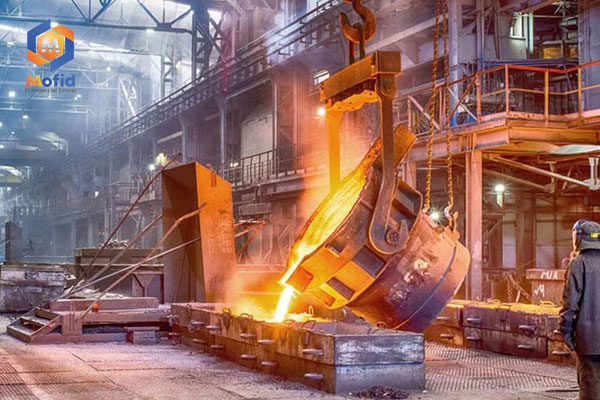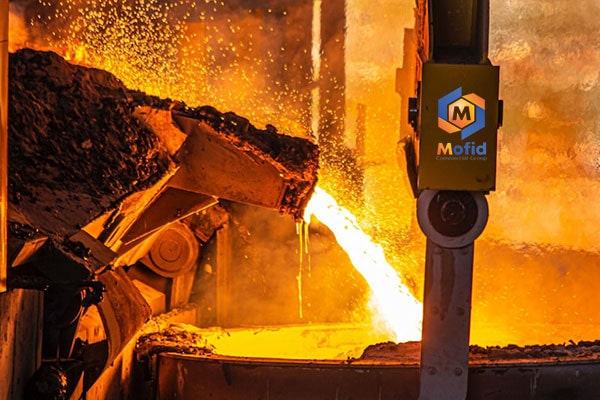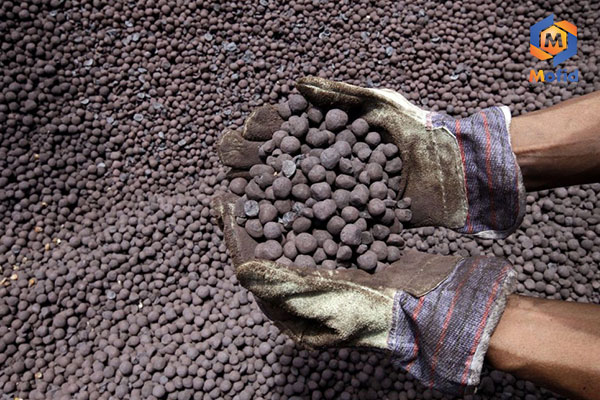Casting Bentonite Considering that casting bentonite has high colloidal and adhesive properties, and its swelling index is very suitable, it also has good strength. For this reason, the use of bentonite in casting is very common for making sand casting molds. In most metal casting molds, sands are used because they have advantages such as high refractoriness, dimensional and structural stability even at high temperatures, and low cost. These types of molds are referred to as non-permanent molds. It should be noted that to prepare casting molds, using sand alone is not enough, and other additives such as binders need to be used. The role of the binder is to create connections between the sand grains and particles and increase their cohesion. The best binder for this purpose is bentonite clay. Bentonite Characteristics Bentonites come in various types with different purity levels, and each has specific technical specifications such as absorption rate, yield, swelling ability, stability, etc. Therefore, not every type of bentonite can be used in the casting industry. Advantages of
Using Bentonite in Casting Mold Making
- Increased Mold Strength: Bentonite acts as a natural binder, enhancing the mold’s strength and resistance to heat and pressure during the casting process.
- High Thermal Stability: Bentonite has excellent thermal properties, which allow it to keep the mold stable at high temperatures, preventing mold damage during casting.
- Water Absorption Capability: Bentonite can absorb large amounts of water, helping to create more flexible molds and improving mold formability.
- Reduction in Cracking: Using bentonite can help reduce cracking in molds at high temperatures, as it contributes to creating a more cohesive and heat-resistant structure.
- Cost-Effectiveness: Bentonite generally costs less than other additives, helping to reduce production costs.
- Chemical Stability: Bentonite is resistant to many chemicals and metals, making it highly suitable for use in casting molds.
- Surface Quality Enhancement: Using bentonite, in combination with other materials, can help improve the surface quality of cast parts and prevent surface defects.
Characteristics of Casting Bentonite
Bentonite is known for its ability to absorb and retain large
- amounts of water, high swelling ability, and viscosity.
- Absorbs up to 15 times its dry volume in water.
- Prevents moisture from penetrating cracks and seams.
- Suitable for light casting with low heat capacity.
- Acts as an ion absorber in solutions.
- Absorbs fats and oils from the environment.
- Considered the primary industrial cleaner.
Key Features of Casting Bentonite for Metals and Mold Making
More than 60% of metal casting molds are made from a combination of sand, bentonite, and water, which is known as Green Sand Metalcasting. In this mixture, bentonite and water serve as a binder for the sand and other components, holding them together. This process is a hydrated system that requires water, energy, time, and technical expertise for production.
Types of Casting Bentonite
Two types of bentonite are used in casting: sodium bentonite and calcium bentonite, each with distinct characteristics.
- Sodium Bentonite: Due to its high water absorption and liquid retention capacity, along with swelling ability and high viscosity, sodium bentonite becomes a unique and efficient material for mold making. It enhances dry strength and improves the thermal capacity of molds, making it ideal for casting iron and steel. Sodium bentonite can absorb up to 15 times its dry volume in water, which helps improve dimensional accuracy and increase thermal resistance.
- Calcium Bentonite: This type has high swelling ability but lower viscosity, which allows it to absorb less water and lose moisture faster. Calcium bentonite is usually used in light casting with low thermal capacity. Unlike sodium bentonite, calcium bentonite can only absorb up to 2 times its dry volume in water but provides greater compressive strength and better permeability. It is often used for casting non-ferrous metals because it causes less vibration. These two types of bentonite are often mixed in specified ratios to
achieve maximum efficiency in the industry. Materials Added to Improve the Performance of Sand and Bentonite Mixtures:
- Pre-mixtures: These materials include various clays added during mold preparation to mix with other sand additives. Pre-mixtures typically contain cellulose, grains, and other additives added to sodium and calcium bentonites.
- Recycled and Recovered Clay: This new casting technology improves ventilation in the sand mixture. Using recycled clay reduces costs and increases the sustainability of the casting process.
- Carbon: Adding carbon helps reduce coal consumption in mold making and decreases the amount of volatile carbon in the mixture.
Methods of Using Bentonite in Sand Casting
- Bentonite in Wet Sand Casting: Bentonite, as a mineral binder, is added to the sand mixture along with water.
- Sand Recycling: Sand can be recycled several times, but each time, bentonite and water must be added.
- Proper Bentonite to Water Ratio: Maintaining the correct ratio improves mold strength and enhances its properties.
- Adhesion and Formability: Bentonite creates adhesion and flexibility in the sand mixture and other casting materials, enabling precise molding.
- Shape Retention: The mixture should be strong enough to maintain its shape when removing the pattern and pouring molten metal.
Other Uses of Bentonite:
- Bentonite in construction
- Food-grade Bentonite
- Bentonite in agriculture
- Bentonite in pharmaceutical and medical industries
- Bentonite in cosmetics and personal care products
- Bentonite in detergents
- Bentonite in drilling
Summary:
Casting bentonite is widely used in making sand molds for metal casting due to its adhesive properties, thermal stability, and water absorption capability. This material plays a crucial role in providing strength and stability to casting molds. Sodium bentonite has higher water absorption capacity and is ideal for casting iron and steel, while calcium bentonite is used for light casting and non-ferrous metals. Additionally, additives like pre-mixtures, recycled clay, and carbon are used to enhance bentonite’s performance in sand mixtures. Besides casting, bentonite is used in industries such as construction, agriculture, pharmaceuticals, cosmetics, and drilling.
FAQ
Why is bentonite used in casting?
Bentonite increases the strength and stability of sand molds due to its adhesive, thermal resistance, and water absorption properties.
What is the difference between sodium and calcium bentonite in casting?
Sodium bentonite has higher water absorption and is suitable for iron and steel casting, while calcium bentonite absorbs less water and is used for light casting and non-ferrous metals.
How is bentonite used in sand casting?
Bentonite is added to sand along with water to create adhesion and flexibility. The right water-to-bentonite ratio is crucial for improving mold strength and shape retention.
What are the advantages of using bentonite in casting molds?
Bentonite improves thermal and mechanical resistance, reduces cracking, enhances surface quality, and is cost-effective.
Are casting sands recyclable?
Yes, casting sands are recyclable several times, but bentonite and water must be added each time.
What other uses does bentonite have?
Bentonite is used in construction, agriculture, pharmaceuticals, cosmetics, detergents, and drilling.
What additives are used to improve bentonite’s performance?
Pre-mixtures, recycled clay, and carbon are added to enhance the performance of sand and bentonite mixtures.




